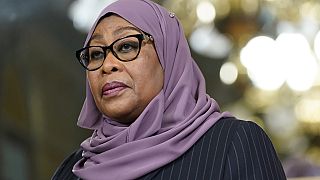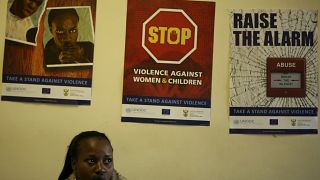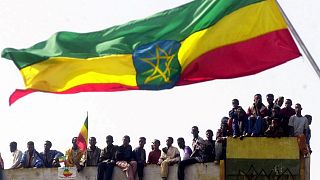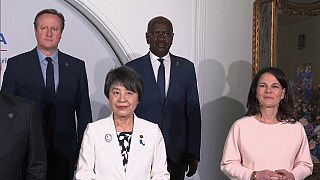Ethiopia
While the rest of the world turned red on Valentine’s Day, students from the Addis Ababa University (AAU) were turning yellow as part of an initiative to empower women.
The Yellow Movement sells flowers donated by flower farms to raise money that will support poor students pay their way through university.
Valentine’s is considered more of a foreign celebration in Ethiopia, and while many young people mark the day with gifts and flowers for their loved ones, some people think the ‘Yellow’ version makes more sense.
“What they are doing and their programme is Holy! It is a very good idea because it is about stretching hands to those who need support. However, I don’t personally subscribe to the idea of the so called ‘Valentine’s Day’ because, it is not our culture. Even if we say it’s okay to celebrate it, I think it has gone way out of line in Ethiopia. You spend the day with someone this year and next year with another person. Generally, it is not normal what the young boys and girls are exposed to,” said Lemlem Minasie in Addis Ababa.
The idea for Yellow Movement was sparked in 2011 after two violent attacks on women at AAU.
With the help of one of the professors, a group of female students decided to start a campaign that could support women and raise awareness about gender based violence.
“People do not know inequality when they see it. I see it. I think it affects us big time. Although we want to lie about it, we want to cover it up. Our culture is mainly patriarchal and we tend to ignore the female side of things. Therefore, it is really important for us to focus on that and to bring that to attention as well,” said Hilina Birhanu, one of the Yellow Movement’s founders.
Along with the Valentine’s Day fundraiser, they also hold regular debates on campus about gender equality and share some of the experiences they face and getting help for victims.
“I mean, the fact that people stalk other people and they think that it is okay, whether it is cat calling or shaming people for who they are, bodily wise or otherwise and also the confrontations that you face. We also have rape cases here in the university, we have cases of sexual harassment between teachers and students, between students as well. So, all that matters for us. I don’t think there’s a crime that is small in my eyes, and in our movement. We want to address it from the very beginning to the very end,” said Birhanu.
Through education they have helped many women get empowered – like Diribwa Debebe, a Folklore PhD student at AAU who is one of the beneficiaries of the Yellow Movement’s scholarship fund.
“I found the yellow movement through the University’s gender office. I was in major financial trouble and at the verge of terminating my studies. After listening to my case they had to go through a lot of discussions as their programme only supports undergraduate students. But they had to make an exception for me after deeply evaluating my situation,” she said. Last year the initiative raised 168,000 Birr (7340 US Dollars) and was able to support 84 students. This year they want to support 100 students.
A WHO report in 2005 showed 71 percent of women aged between 15-49 experienced physical or sexual violence at least once in their lifetime.
But Ethiopia has made significant advances to protect women’s rights in recent years including legislation on rape, female genital mutilation and other offences like abduction of women for marriage.
Volunteers for the Yellow Movement hope their cause can dispel stereotypes about Valentine’s Day being all about material gifts and instead teach people to love and care for each other.
“Some people feel like, Valentine’s Day isn’t Ethiopian culture and so you shouldn’t be doing it and all that and I always say maybe Valentine’s Day is not our culture but kindness and goodness is our culture so it is a good way to take advantage of something that might not necessarily have come from us but it is a good activity for a good cause,” said Mihret Equbay, a Yellow Movement member.
Why Yellow? The founders said they wanted their cause to be represented by a color that stands out and signifies happiness, hope and a brand new day.











00:59
Donors pledge $630 million for conflict-hit Ethiopia
Go to video
Hellen Obiri claims back-to-back Boston Marathon titles, leading Kenyan women's podium sweep
01:04
Kenya proposes treaty to ease Somalia-Ethiopia tensions
Go to video
Why has the Somalia-Ethiopia row deepened?
Go to video
Ethiopia's Uma and Fikir win men’s and women’s Paris Marathon